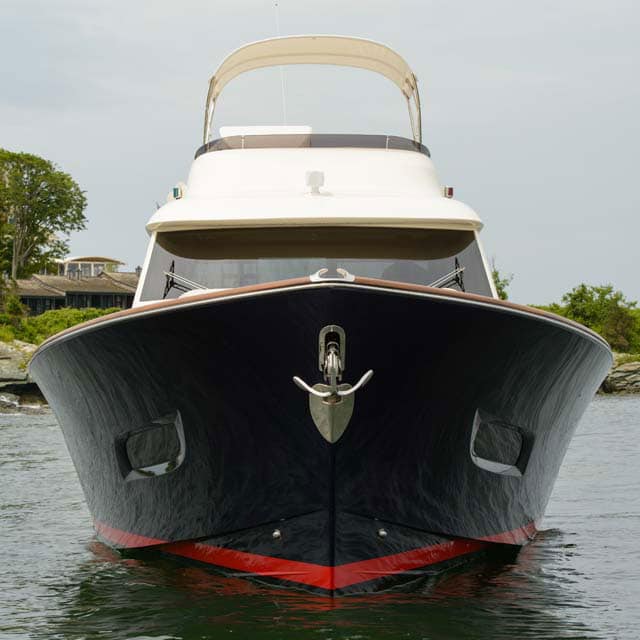
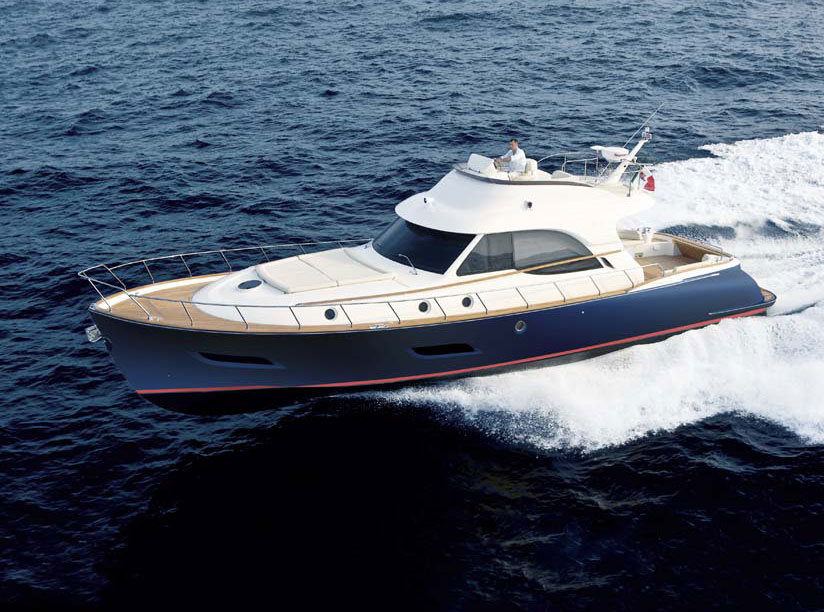
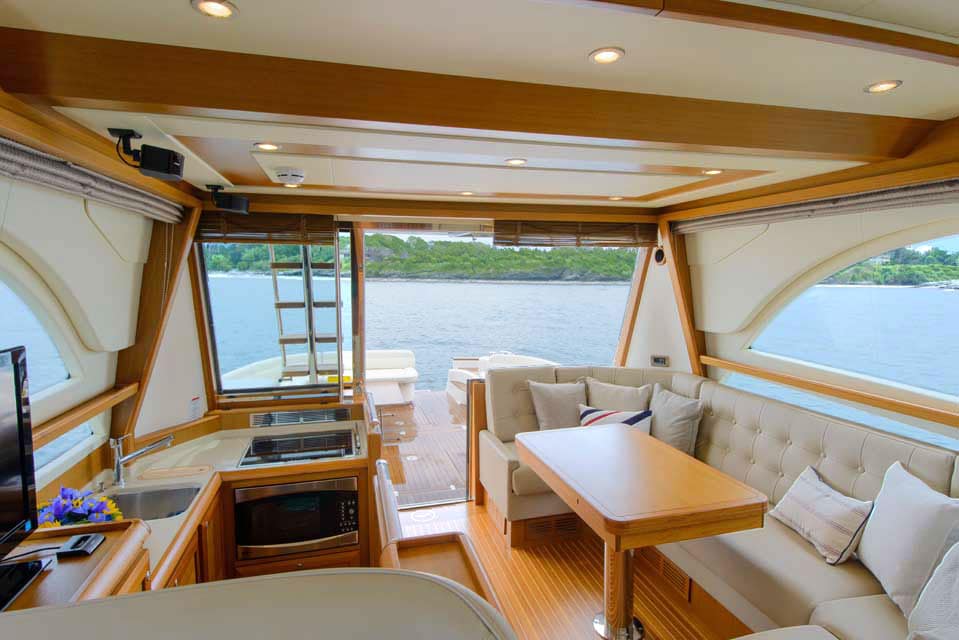
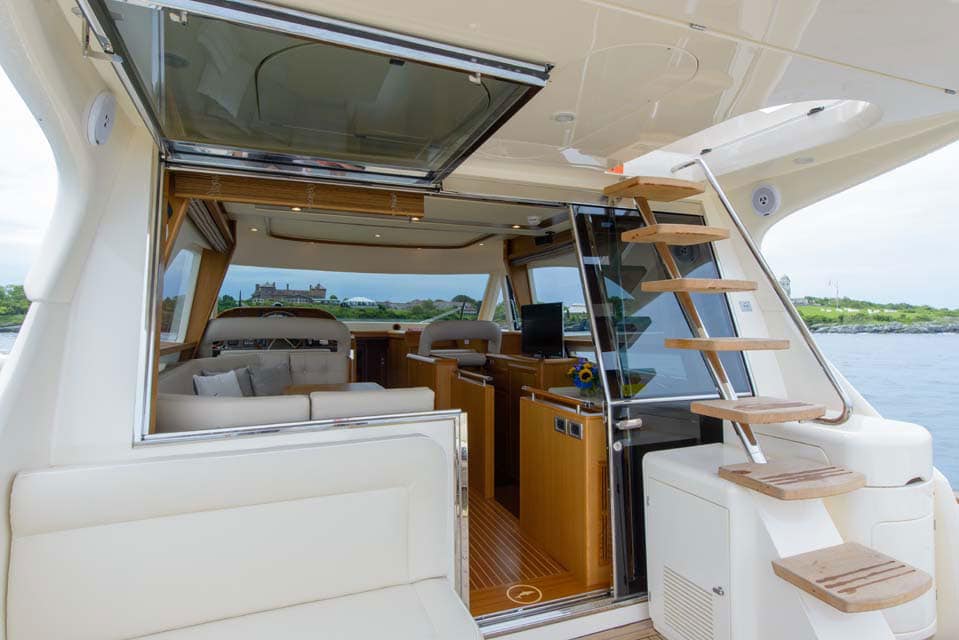
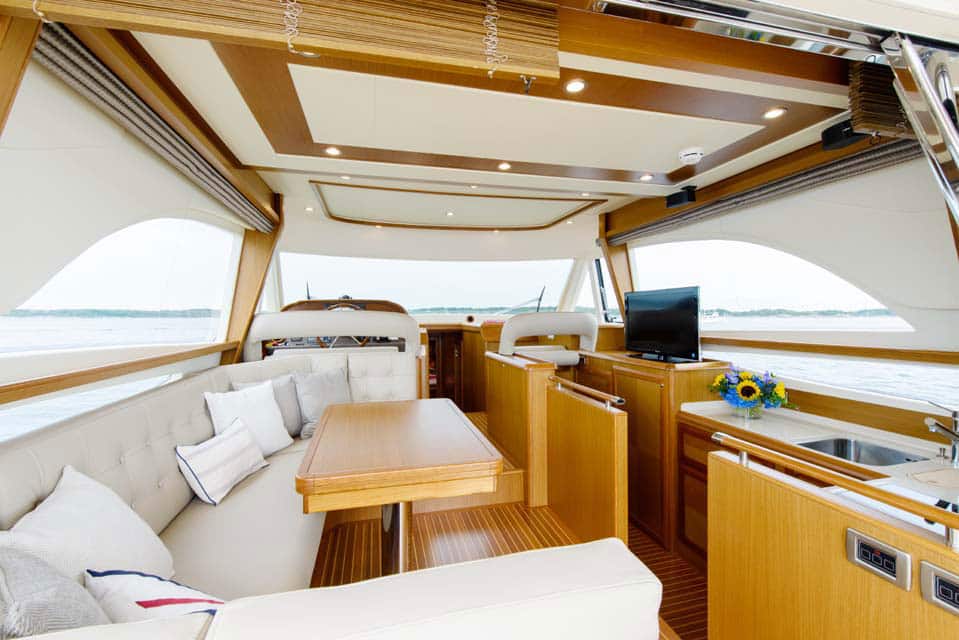
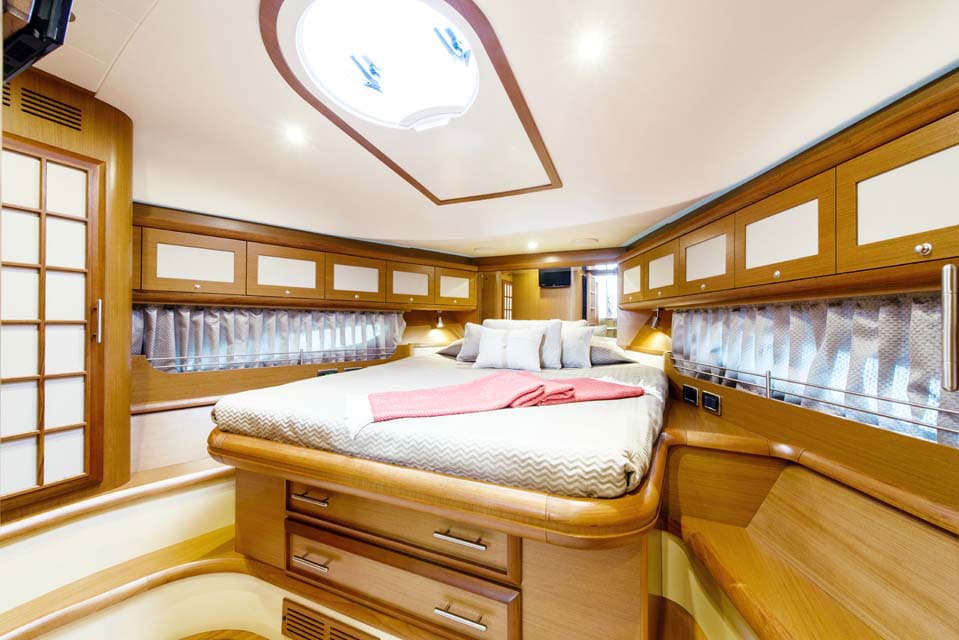
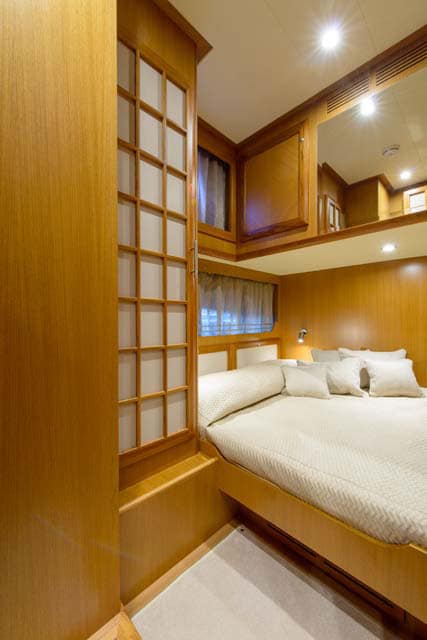
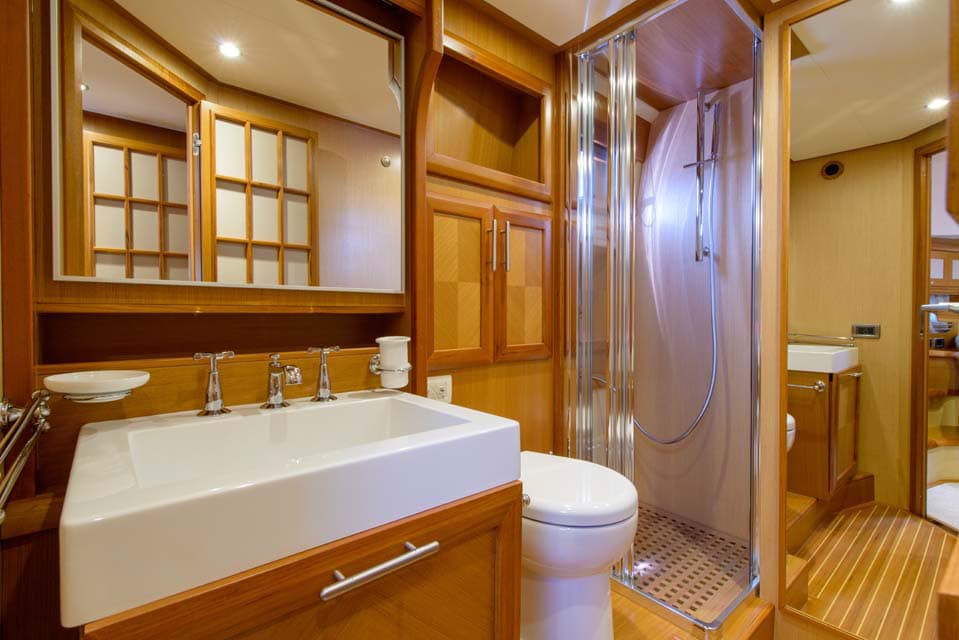
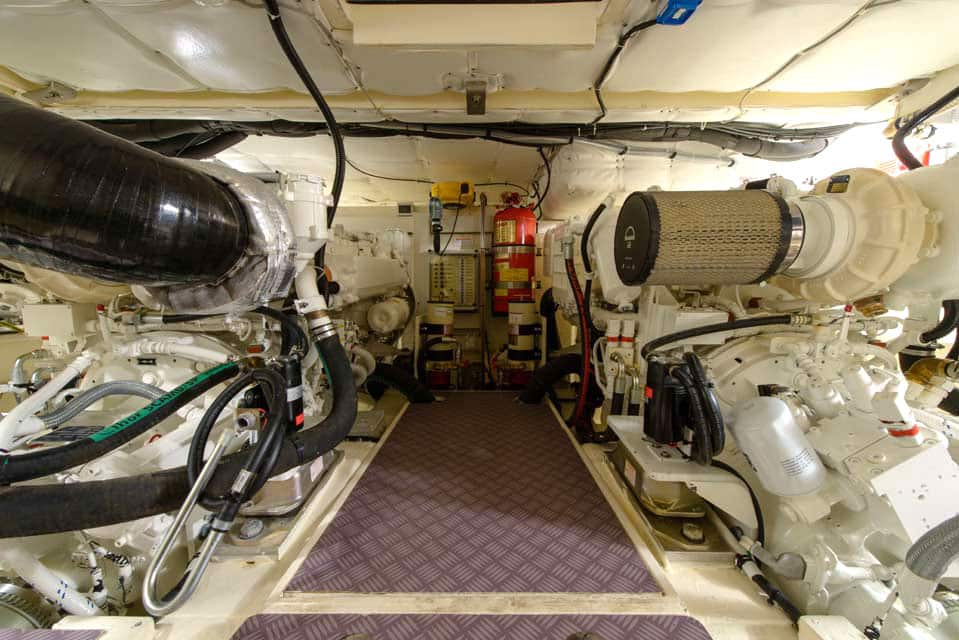
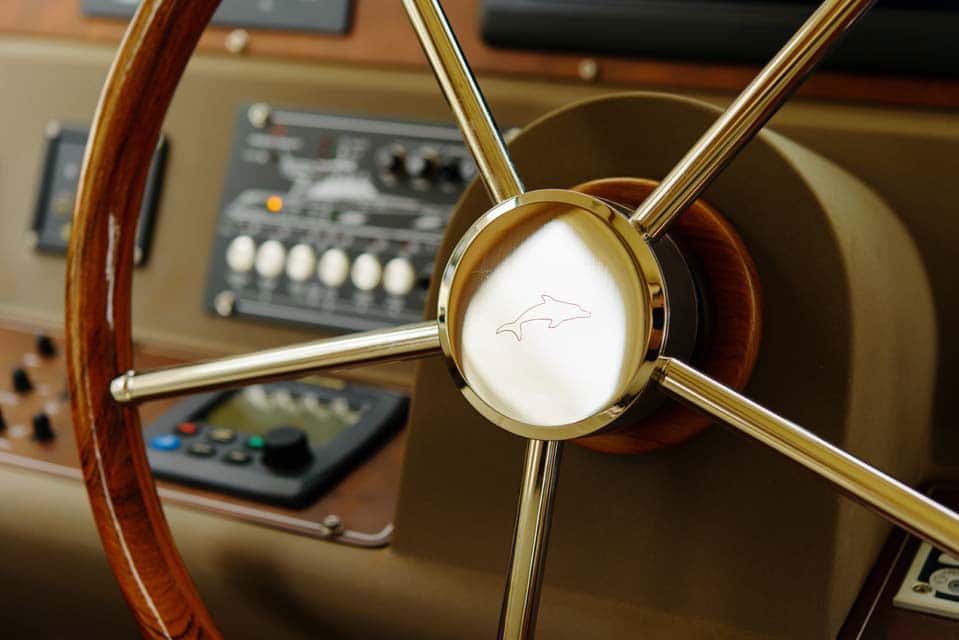
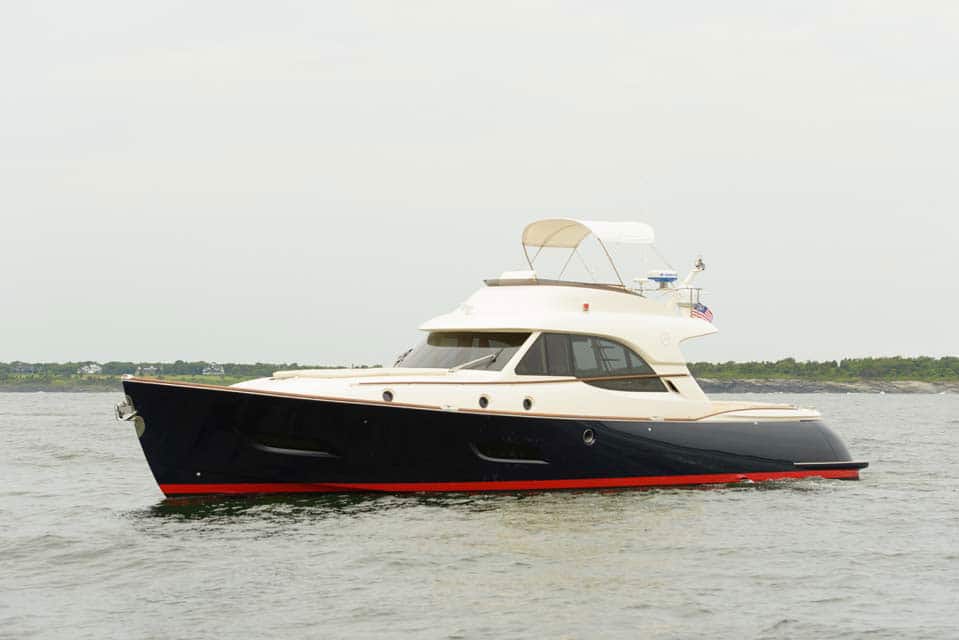
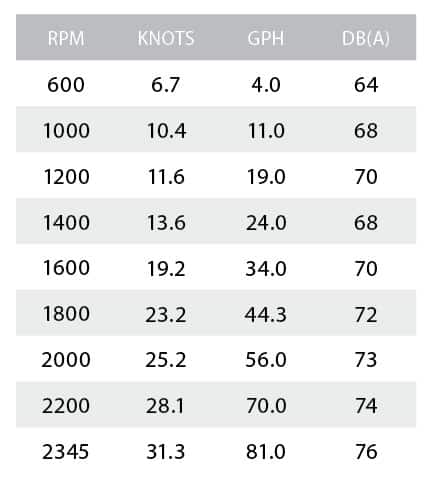
Speeds were measured by GPS off Sag Harbor, New York, in calm seas with 5 knots of wind, 75 percent fuel, 60 percent water and three persons aboard. Fuel consumption was measured with the MAN electronic engine-monitoring system. Sounds levels were measured at the lower helm with windows and doors closed. Specifications:
LOA: 54’8″
BEAM: 16’1″
DRAFT: 4’8″
DISPL.: 59,304 lb.
FUEL: 674 gal.
WATER: 188 gal.
DEADRISE: 19 degrees
ENGINES (tested): 2 x 800 hp MAN diesels
PRICE AS TESTED: $2,850,000 Click here to see more yachts from Mochi Craft. Mochi Craft, 954-462-5527; mochicraft-yacht.com








